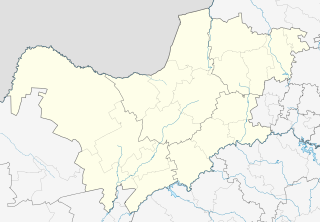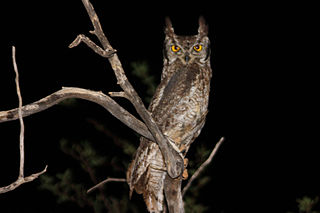
Australopithecus is a genus of early hominins that existed in Africa during the Late Pliocene and Early Pleistocene. The genera Homo, Paranthropus, and Kenyanthropus evolved from Australopithecus. Australopithecus is a member of the subtribe Australopithecina, which also includes Ardipithecus, though the term "australopithecine" is sometimes used to refer only to members of Australopithecus. Species include A. garhi, A. africanus, A. sediba, A. afarensis, A. anamensis, A. bahrelghazali and A. deyiremeda. Debate exists as to whether some Australopithecus species should be reclassified into new genera, or if Paranthropus and Kenyanthropus are synonymous with Australopithecus, in part because of the taxonomic inconsistency.

A pseudoscorpion, also known as a false scorpion or book scorpion, is an arachnid belonging to the order Pseudoscorpiones, also known as Pseudoscorpionida or Chelonethida.

Neoceratodus is a genus of lungfish in the family Neoceratodontidae. The extant Australian lungfish is the only surviving member of this genus, but it was formerly much more widespread, being distributed throughout Africa, Australia, and South America. Species were also much more diverse in body plan; for example, the Cretaceous species Neoceratodus africanus was a gigantic species that coexisted with Spinosaurus in what is now the Kem Kem Formation of Morocco. The earliest fossils from this genus are of Neoceratodus potkooroki from the mid Cretaceous (Albian-Cenomanian) Griman Creek Formation of Australia, remains from the Late Jurassic of Uruguay assigned to this genus probably do not belong to the genus.

Taung is a small town situated in the North West Province of South Africa. The name means place of the lion and was named after Tau, the King of the Barolong.Tau is the Tswana word for lion.

Australopithecus africanus is an extinct species of australopithecine which lived from 3.67 to 2 million years ago in the Middle Pliocene to Early Pleistocene of South Africa. The species has been recovered from Taung and the Cradle of Humankind at Sterkfontein, Makapansgat, and Gladysvale. The first specimen, the Taung child, was described by anatomist Raymond Dart in 1924, and was the first early hominin found. However, its closer relations to humans than to other apes would not become widely accepted until the middle of the century because most had believed humans evolved outside of Africa principally due to the hoax transitional fossil Piltdown Man from Britain. It is unclear how A. africanus relates to other hominins, being variously placed as ancestral to Homo and Paranthropus, to just Paranthropus, or to just P. robustus. The specimen "Little Foot" is the most completely preserved early hominin, with 90% of the skeleton intact, and the oldest South African australopith. However, it is controversially suggested that it and similar specimens be split off into "A. prometheus".

The spotted eagle-owl is a medium-sized species of owl, one of the smallest of the eagle owls. Its length is 45 centimetres (18 in) and its weight is from 454 to 907 grams. It has a 100 to 140 centimetres wingspan. The facial disk is off white to pale ochre and the eyes are yellow. It has prominent ear tufts, and the upper body is dusky brown, the lower parts off-white with brown bars. Prior to 1999 the spotted eagle-owl was considered conspecific with the greyish eagle-owl, but now it is classed as a separate species.
Tridenchthoniidae is a family of pseudoscorpions within the superfamily Chthonioidea. The family comprises one fossil and 15 recent genera, containing 70 species:

Africanus Horton is a crater on Mercury. It was named by the IAU in 1976, after Africanus Horton, a Creole African nationalist writer and an esteemed medical surgeon in the British Army from Freetown, Sierra Leone.
Wellesaurus is an extinct genus of mastodonsauroid temnospondyl. They were amphibious carnivores that lived in freshwater environments.
T. africanus may refer to:
Chelignathus is an extinct genus of pseudoscorpion in the family Tridenchthoniidae. There is one described species in Chelignathus, C. kochii.
Sororoditha hirsuta is a species of pseudoscorpion in the family Tridenchthoniidae.
Tridenchthonius is a genus of pseudoscorpions in the family Tridenchthoniidae. There are about 16 described species in Tridenchthonius.
Verrucaditha spinosa is a species of pseudoscorpion in the family Tridenchthoniidae.
Brasilentulus africanus is a species of proturan in the family Acerentomidae. It is found in Africa.

Phoresis or phoresy is a non-permanent, commensalistic interaction in which one organism attaches itself to another solely for the purpose of travel. Phoresis has been observed directly in ticks and mites since the 1700s and indirectly in fossils 320 million years old, but is not restricted to arthropods or animals. Plants with seeds that disperse by attaching themselves to animals are also considered to be phoretic.
Calocheiridius is a genus of pseudoscorpions in the family Olpiidae, containing the following species:
Tyrannochthonius rex is a species of pseudoscorpion in the family Chthoniidae.







